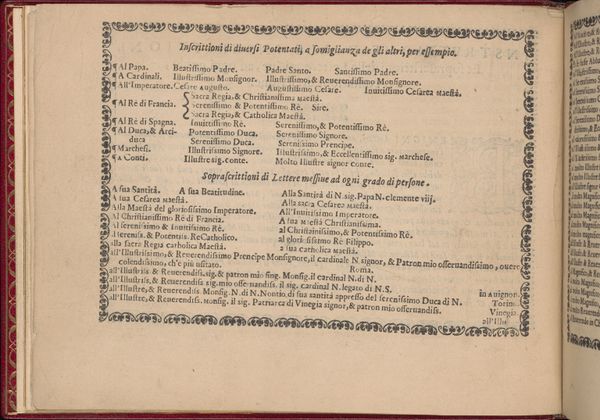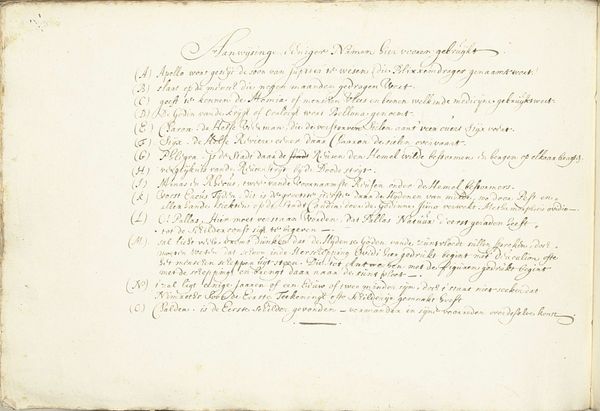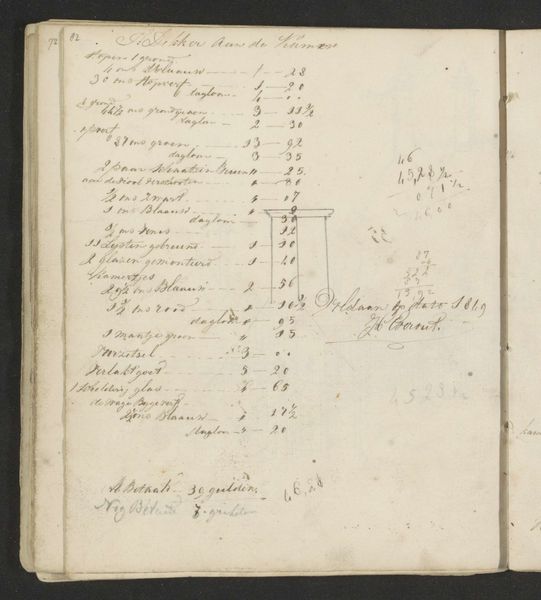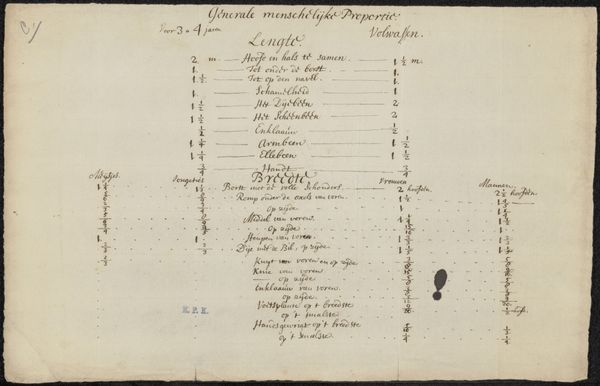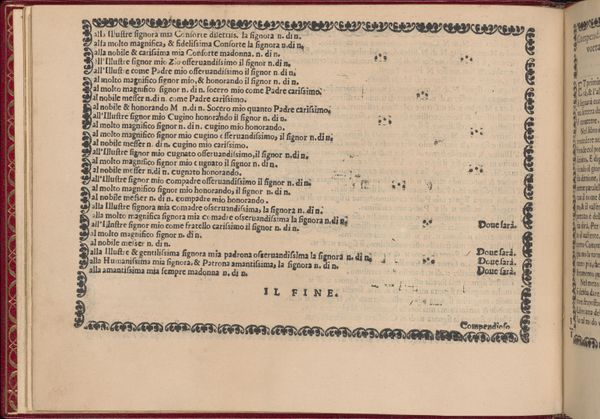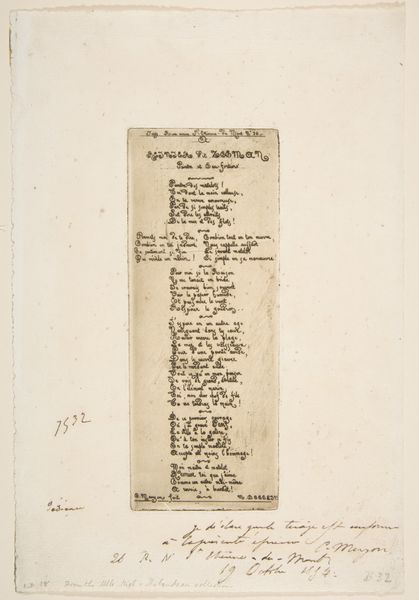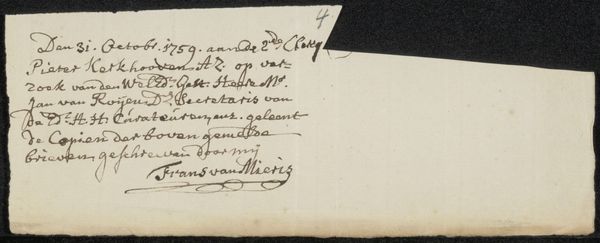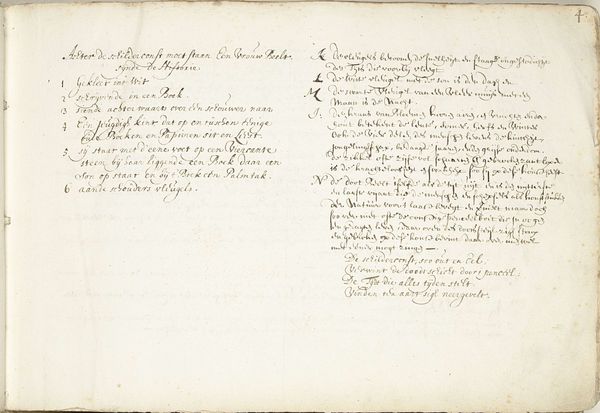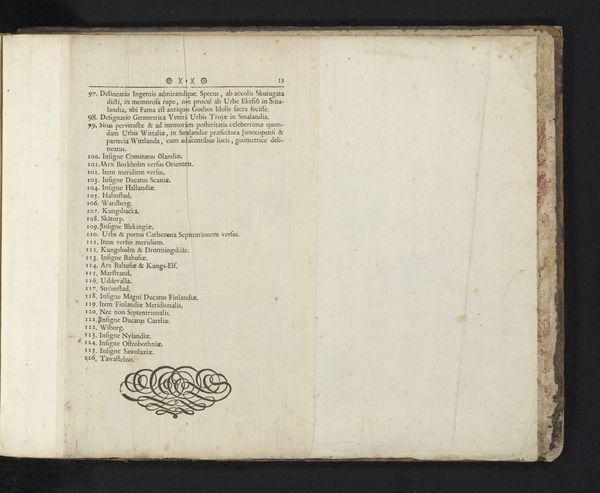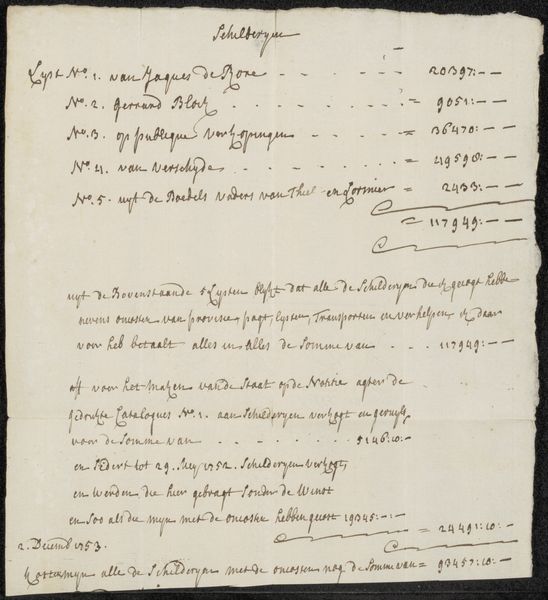
print, paper, typography
# print
#
paper
#
11_renaissance
#
typography
Dimensions: height 190 mm, width 178 mm, height 284 mm, width 355 mm
Copyright: Rijks Museum: Open Domain
Curator: Here, we’re looking at "Inhoudsopgave bij het Nieuwe Testament," a 1585 print by Gerard de Jode. It's a fascinating example of early book typography on paper. Editor: It’s a table of contents! It looks surprisingly modern in its layout, even though the typeface feels very period specific. What strikes you most about this from a materialist perspective? Curator: I'm drawn to how the technology of printmaking democratized access to religious texts during the Renaissance. This isn’t just about the content of the New Testament; it’s about the material process of disseminating knowledge. The labour involved, the use of typography... all of these elements facilitated wider engagement with scripture. Editor: That’s interesting. I hadn't considered the social impact of printing technology itself. So, beyond the religious subject matter, the very act of creating and distributing this index had a cultural effect? Curator: Precisely! Think about the skill required to produce the printing plates. Consider the social status of the printers and publishers versus the clergy who traditionally controlled access to such information. The availability of printed texts reshaped the relationship between individuals, religious institutions, and the interpretation of faith. Editor: I see what you mean. The materials and production become the message. It is not necessarily about religious intent, it's about wider distribution through a mass production process. Curator: Exactly. Examining the means of production helps us understand the social and cultural forces at play. The accessibility afforded by prints like these really fueled theological and social change. Editor: It's shifted my perception entirely. What initially seemed like a simple book index is actually a complex object reflecting changes in technology, labour and social access to knowledge. Curator: Indeed. That’s what a materialist approach can reveal. The artwork transforms into a site of inquiry for production, accessibility, and societal impact.
Comments
No comments
Be the first to comment and join the conversation on the ultimate creative platform.
